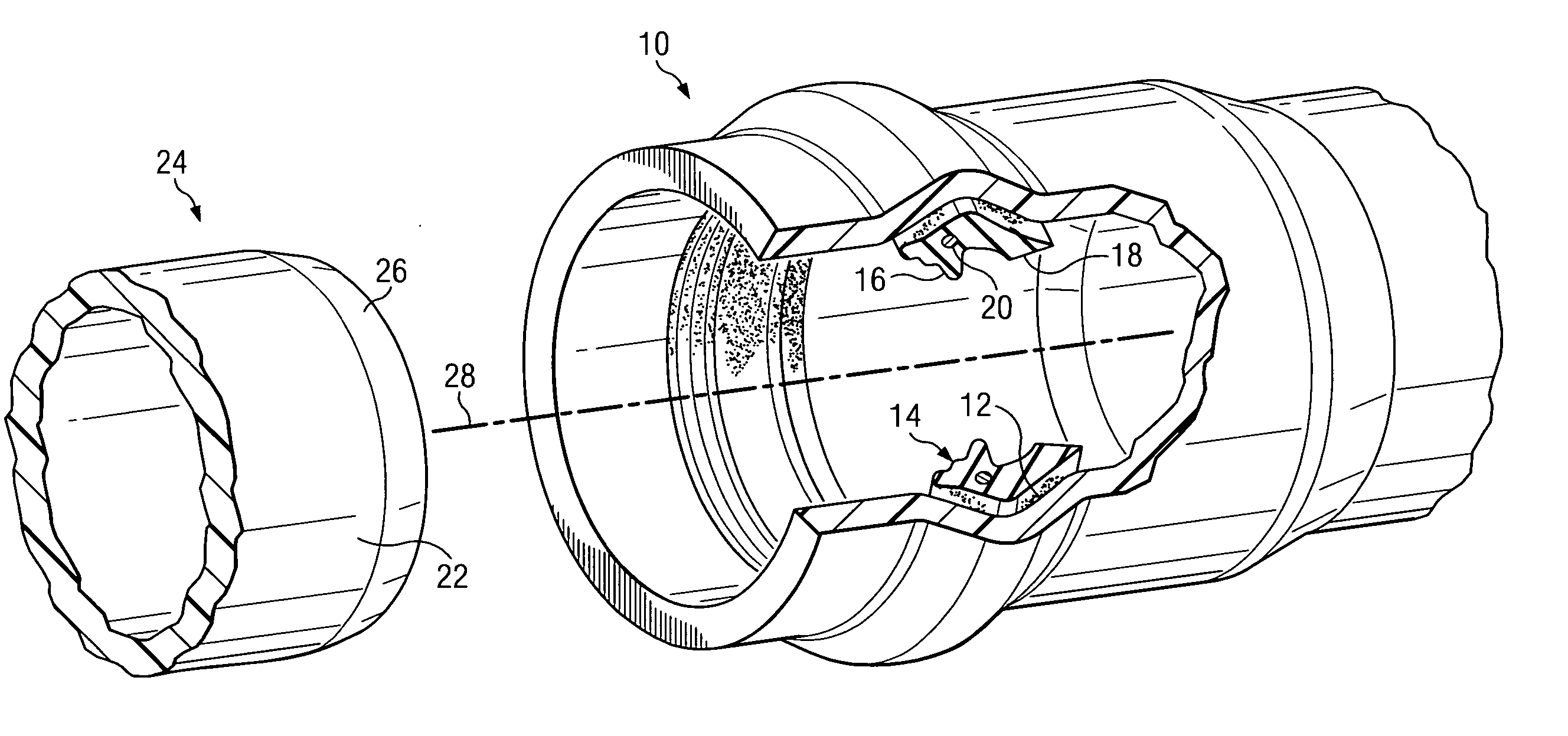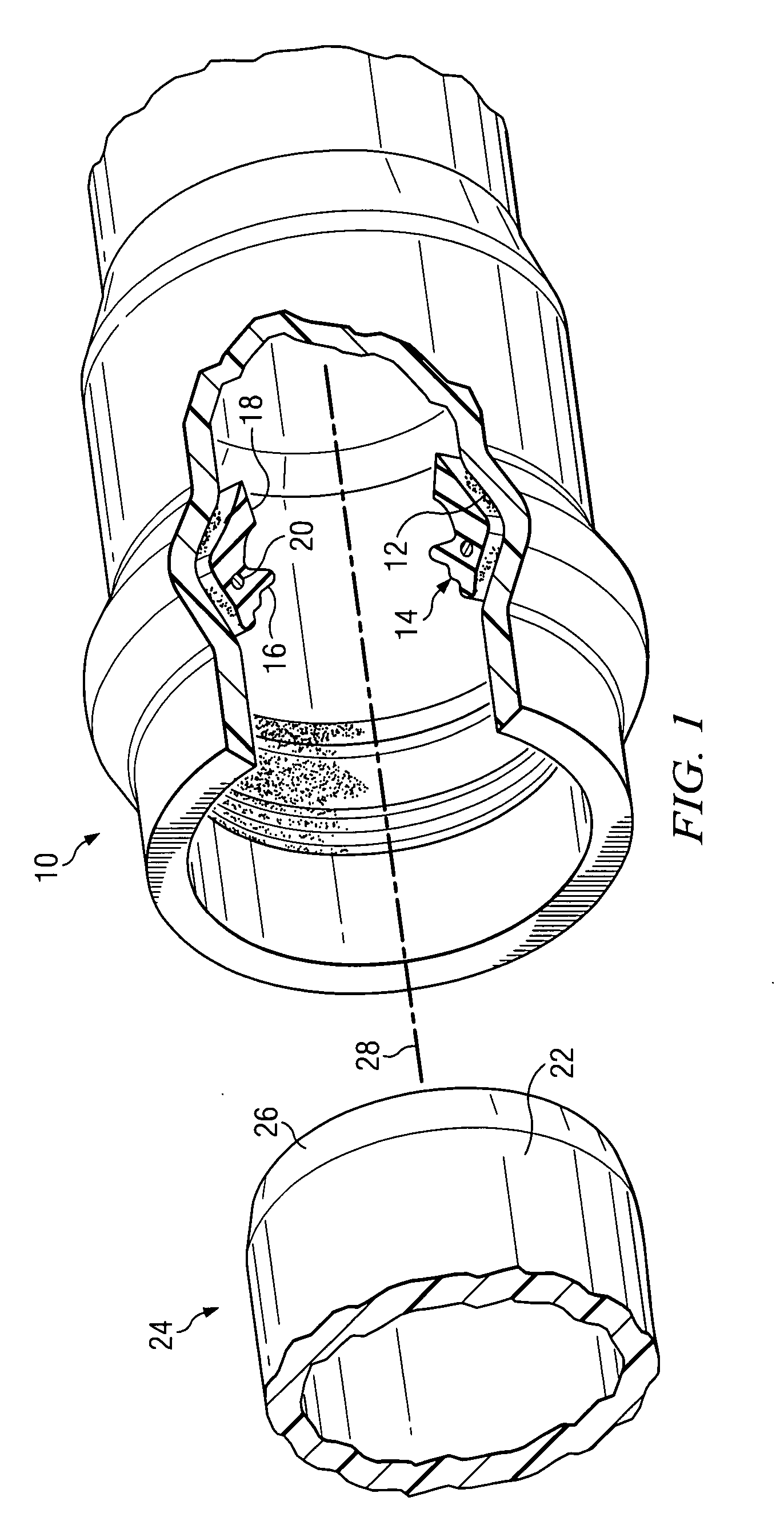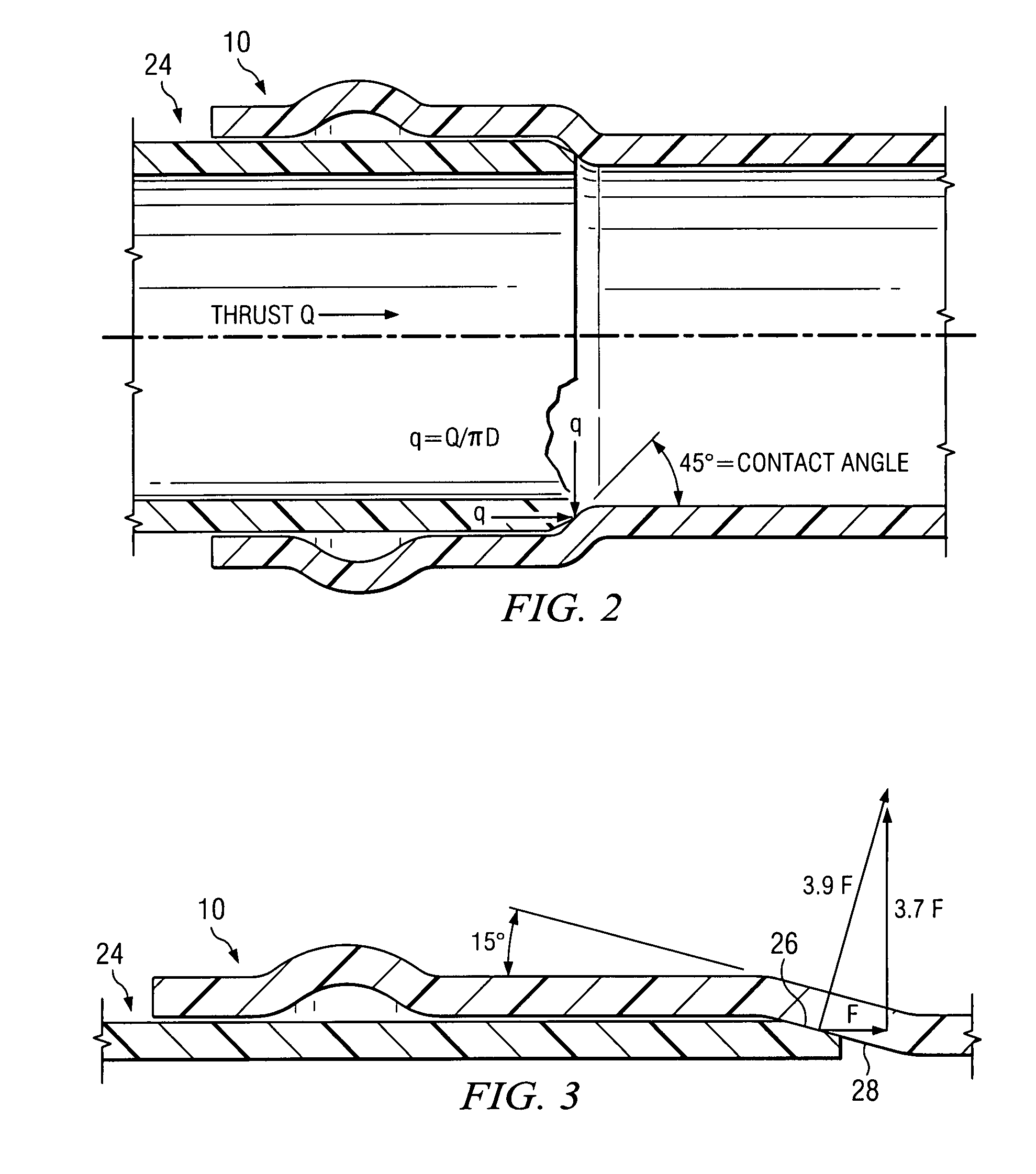Method and apparatus for preventing overinsertion in plastic pipe systems
a technology of plastic pipe and over-insertion, applied in the direction of hose connection, sleeve/socket joint, pipe-joint, etc., to achieve the effect of reducing the cost of sealing, ensuring the integrity of the pipe, and being reliable in operation
- Summary
- Abstract
- Description
- Claims
- Application Information
AI Technical Summary
Benefits of technology
Problems solved by technology
Method used
Image
Examples
Embodiment Construction
[0035] Turning to FIG. 1, there is shown an exploded view of a plastic pipe joint in which a belled female pipe end 10 is provided with an annular groove 12 for receiving an elastomeric sealing gasket 14. The annular sealing gasket 14 is a ring shaped member which, in cross section, has a compression seal region 16 and a trailing seal region 18. The gasket may be reinforced with a steel ring 20 which circumscribes the gasket body at one circumferential location. The sealing regions 16, 18 contact the exterior surface 22 of the mating male pipe section 24 upon assembly of the joint. During the assembly process, the male pipe end 24 travels to the left along the longitudinal axis 28 of the female, bell pipe end 10. Both of the pipe sections 10, 24 are formed of PVC. In the example illustrated in FIG. 1, the mating male pipe end 24 has a chamfered lip region 26. The sealing gasket is preferably made of a resilient elastomeric, thermoplastic material. For example, the sealing gasket may...
PUM
| Property | Measurement | Unit |
|---|---|---|
| angle | aaaaa | aaaaa |
| interface angle | aaaaa | aaaaa |
| distance | aaaaa | aaaaa |
Abstract
Description
Claims
Application Information
 Login to View More
Login to View More - R&D
- Intellectual Property
- Life Sciences
- Materials
- Tech Scout
- Unparalleled Data Quality
- Higher Quality Content
- 60% Fewer Hallucinations
Browse by: Latest US Patents, China's latest patents, Technical Efficacy Thesaurus, Application Domain, Technology Topic, Popular Technical Reports.
© 2025 PatSnap. All rights reserved.Legal|Privacy policy|Modern Slavery Act Transparency Statement|Sitemap|About US| Contact US: help@patsnap.com



